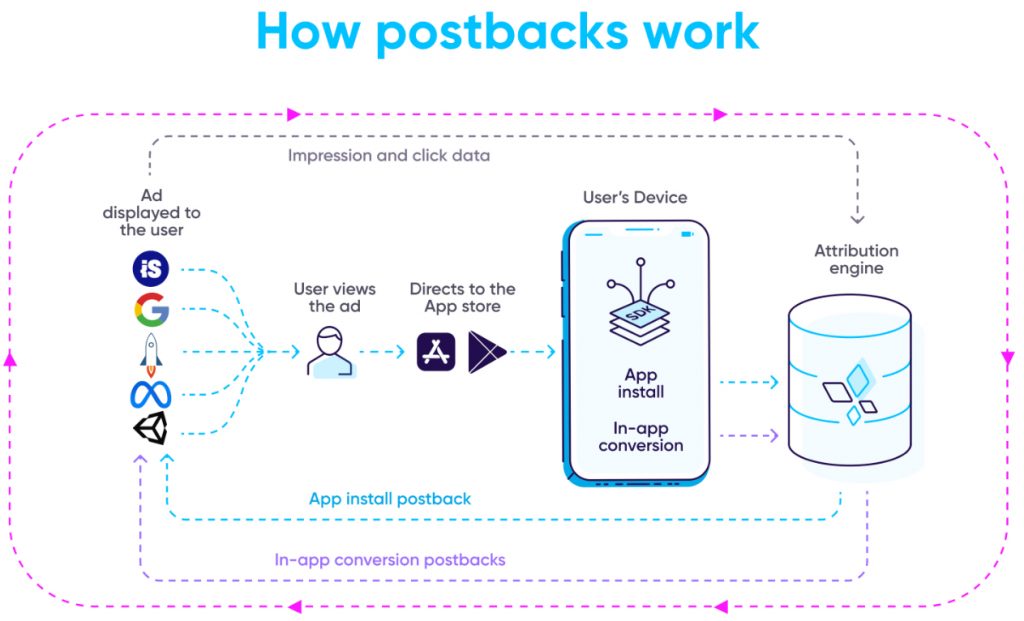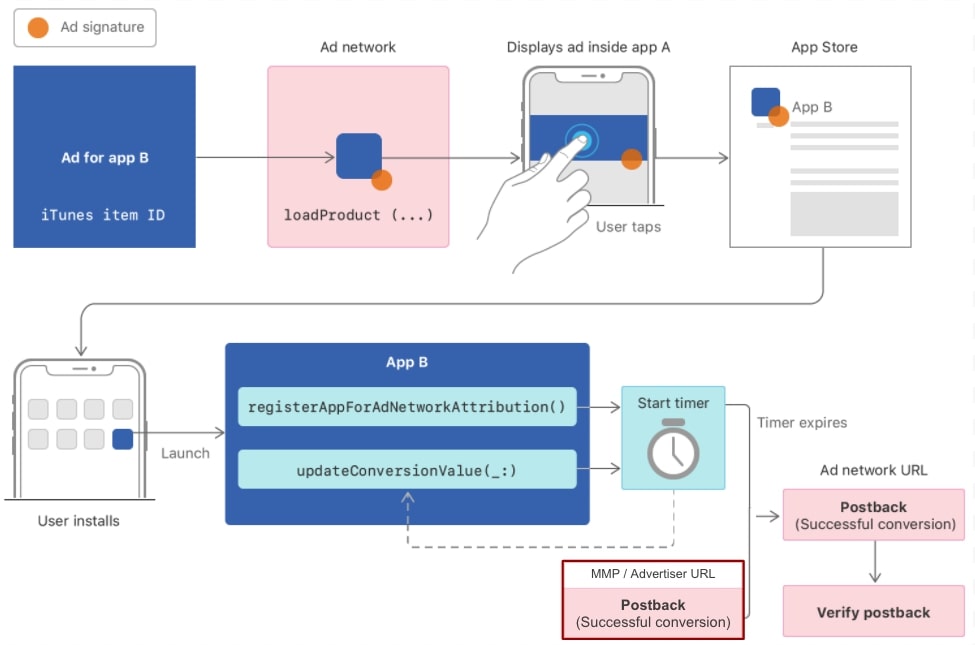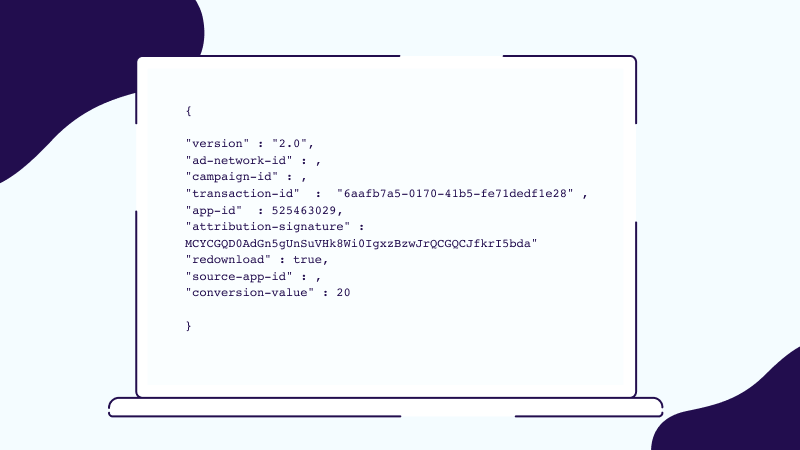
Postback
A postback is the exchange of information between servers to report a user’s action on a website, network, or app.
What is a postback?
In mobile app marketing, a postback contains data that is sent from attribution providers to media sources. There are two types of postbacks:
- Install postback: Informs the winning media source that it was attributed for an install (advertisers can also decide to send a postback to partners that did not win the attribution, albeit with limited data compared to the winner).
- In-app event postback: Informs the media source of a post-install in-app action as it happens.
It’s also important to note that the postback mechanism in Apple’s SKAdnetwork is completely different and presents a few challenges for advertisers that we’ll cover further down.
What is a postback good for?
Postbacks enable advertisers and media sources to better optimize their ad campaigns by providing a useful feedback loop for the entire mobile advertising ecosystem.
Here are the three key benefits of postbacks:
- Postbacks help advertisers better optimize their campaigns and allow ad networks to accurately execute Cost-Per-Install (CPI) based billing.
- Install postbacks allow advertisers to create remarketing audiences without sharing identifiable information.
- The data from conversion postbacks provide advertisers with campaign data to better optimize their remarketing campaigns.
How are postbacks being used in the mobile ecosystem?
Postbacks allow data to be transferred and verified across devices, ad networks, and MMPs accurately and effectively.

Since the enforcement of Apple’s App Tracking Transparency (ATT) framework as part of iOS 14.5, the postback mechanism has effectively been divided into two:
- Android and iOS consenting users
- iOS non-consenting users
Let’s dive into an example by examining the latter. Imagine a user sees an ad on the App Store and downloads the most popular puzzle game, Blockex. Upon install, the install postback with the attribution parameters is sent from the attribution provider to the ad network that was attributed for the install.
If the user then plays 3 levels and purchases an in-game powerup for $1.99, a total of 4 in-app event postbacks will be sent to the media source as they happen (assuming the advertiser configured them and enabled passage of this data).
This enables media partners to optimize their campaigns based on post-install activity.
How postbacks in SKAdNetwork work
As mentioned above, postbacks in Apple’s privacy-centric SKAdNetwork attribution function differently. Since SKAN only allows a single postback to be sent, it essentially combines the install and in-app event postback into one.
In this mechanism, the device sends a postback to the ad network and advertiser (or MMP if configured as an end point) — but not immediately. Instead, a randomized timer sets a window of at least 24 hours from the install – to ensure a single user cannot be identified.

If the user performed in-app events, they will be reported as part of that single postback in a conversion value framework – a somewhat complex mechanism to measure post-install activity.
If the advertiser decides to extend the postback timer when a user continues to engage with their app, they’re essentially losing out on the ability to perform immediate campaign optimization. That’s why advertisers typically do not extend the timer beyond 72 hours.
Here’s an example of the data a SKAN postback contains. As you can see, no piece of data can identify a specific user:

Key takeaways
- To ensure campaign optimization, attribution providers use postbacks to send media sources relevant install attribution and in-app event data .
- The value of postback data is determined by the advertiser’s conversion mapping configurations. The more granular the setup, the more valuable campaign performance data they’ll receive.
- Postbacks can be used by advertisers to optimize their ad campaigns, providing feedback loops for the entire mobile advertising ecosystem, and allowing ad networks to more accurately execute Cost-Per-Install (CPI) based billing.
- Install postbacks enable advertisers to create remarketing audiences without sharing identifiable information, while data from conversion postbacks provides them with campaign data that’s used for remarketing optimization.
- The postback mechanism in SKAdNetwork for non-consenting iOS users is sent only once and includes information on both the install and in-app event.



